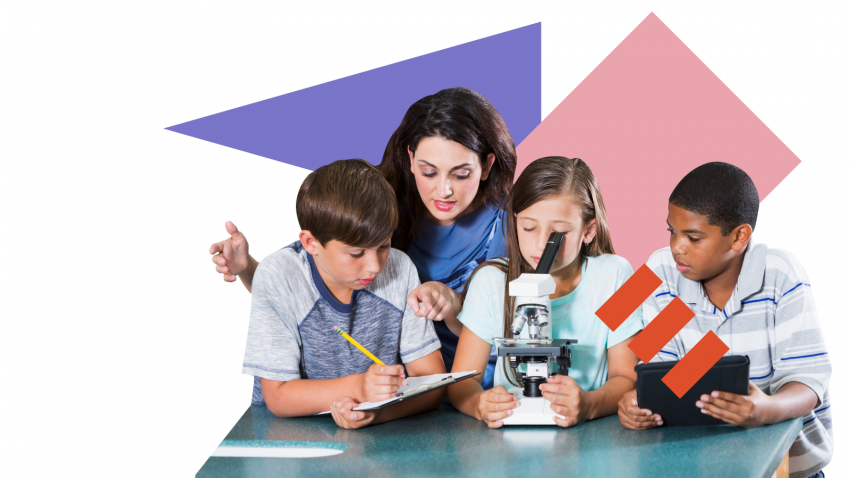Top Tips On Deciding On Italian Primary Teaching Didactics
Wiki Article
What Educational Materials And Information Do Kindergarten And Primary Schools Need?
The primary and kindergarten classes typically require a variety of educational and information materials to support the development and learning of their students. Materials that are needed include Curriculum materials. They are used to help meet the school's goals for learning. Examples of the materials that may be needed include: Curriculum materials- These products are designed to aid in the learning objectives of the curriculum at school.
Classroom supplies like pencils, paper as well as glue, scissors, and other art materials are required for children to finish their projects and activities.
Educational technology: In the current digital age, technological advancements in education such as computers, tablets, and interactive whiteboards can improve learning and offer additional resources for students.
Books - Kindergartens and primary school need to have a selection of appropriate for children's ages that help children develop reading and language skills.
Blocks, puzzles and games can be great for developing spatial awareness as well as problem solving skills.
Visual aids. Posters, maps charts, posters and other visual aids may be used to assist kids remember important concepts.
Arts and Music Materials Materials for art, instruments, such as clay, paints and other substances can provide children with artistic ways to express themselves and encourage self-expression.
Safety supplies - Safety products such as first aid kits and fire extinguishers contribute to the well-being and safety of staff and students.
All in all, kindergarten and primary schools require a wide range of educational and informational resources to create an engaging and safe learning environment for students. Take a look at the recommended sostegno infanzia for site examples.

What Are The Best Maths Aids For Italian Nursery Schools?
There is a way to assist young children develop their mathematical, spatial, problem-solving, and other skills by using mathematical educational resources. Examples of materials that are recommended include: Counting manipulations Counting manipulatives, such as counting bears or blocks can help children improve their skills in counting along with fine motor skills and their hand-eye coordination.
Charts and number cards are a great idea as a method of introducing children into numbers and counting. This could include large and vibrant numbers that are placed on the walls or smaller cards that children can hold.
Shape manipulatives. Shape manipulatives are beneficial for children to develop their spatial reasoning skills and also to discover various shapes.
Measuring Tools: Measuring instruments like rulers (or measuring tapes) as well as scales (or scales) and measuring tapes can be utilized to help children build their mathematical vocabulary and gain knowledge about comparisons and measurements.
Simple games can be used to enhance the problem-solving skills of children. They also help them improve their concentration as well as their focus.
Technology-based learning aids. Technology aids like tablets that contain educational math games and apps can help engage children in the classroom and also provide them with additional sources.
It is vital to use the material according to its developmental stage and ensure they are safe and appropriate for children in the early years. Teachers and parents are able to use these materials to design engaging, interactive math activities which encourage curiosity and enthusiasm for learning. Follow the top rated schede didattiche matematica for blog examples.

What Science Didactic Cards Do Italian Nurseries Suggest?
Science didactic cards can be an great tool to teach young children the basics of science. Below are a few examples of scientific-based educational cards. They can also include images of animals, their habitats and other components to help enhance the learning experience.
Plant cards: These cards can be used to educate children about the features of different plants. They can feature illustrations of the plants as well as their development stages to make the learning experience more engaging.
Cards for weather: These cards help youngsters understand the impact of various types and conditions on the environment. The cards may include illustrations of different weather conditions, including clouds, sun, rain and snow.
Space cards: Space cards can teach children about the solar system as well as the planets. They may feature illustrations of planets, or have unique attributes.
Human body-cards can teach children about the different parts of the human body work. They may include pictures of body parts and the functions they play.
It is important to choose science-based didactic materials that are fun and engaging for kids of all age groups. These cards can help teachers and caregivers create fun and interactive science projects to encourage children's curiosity. View the top rated schede didattiche scienze for website recommendations.

What Teaching Resources For Geography Do Italian Nurseries Require?
In Italian nurseries, geography-related teaching materials are used to teach children about the world as well as different cultures. A few examples of the resources that you can use for teaching geography are: Maps. Maps are useful for helping children understand the different countries and regions, and the locations of landmarks and natural attributes.
Globes. Globes will assist your child to see the Earth's surface. They will also be able to learn more about the continents.
Pictures and videos. Videos and pictures of different cultures, places and individuals can teach kids a lot about the world.
Books Age-appropriate books and feature cultures and places all over the world could help children develop a curiosity for geography.
Natural materials. Shells and plants are great for teaching children about ecosystems.
Field trips: Field trips to local parks museums, zoos, or zoos can give children the chance to experience hands-on activities and also an chance to study geography in a more realistic setting.
The materials you use to teach geography must be appropriate for the age of the child, as well as sensitive to the culture of your students. Teachers and caregivers can use these materials to design fun and engaging geography lessons that promote children's curiosity and fascination with the world around them.
